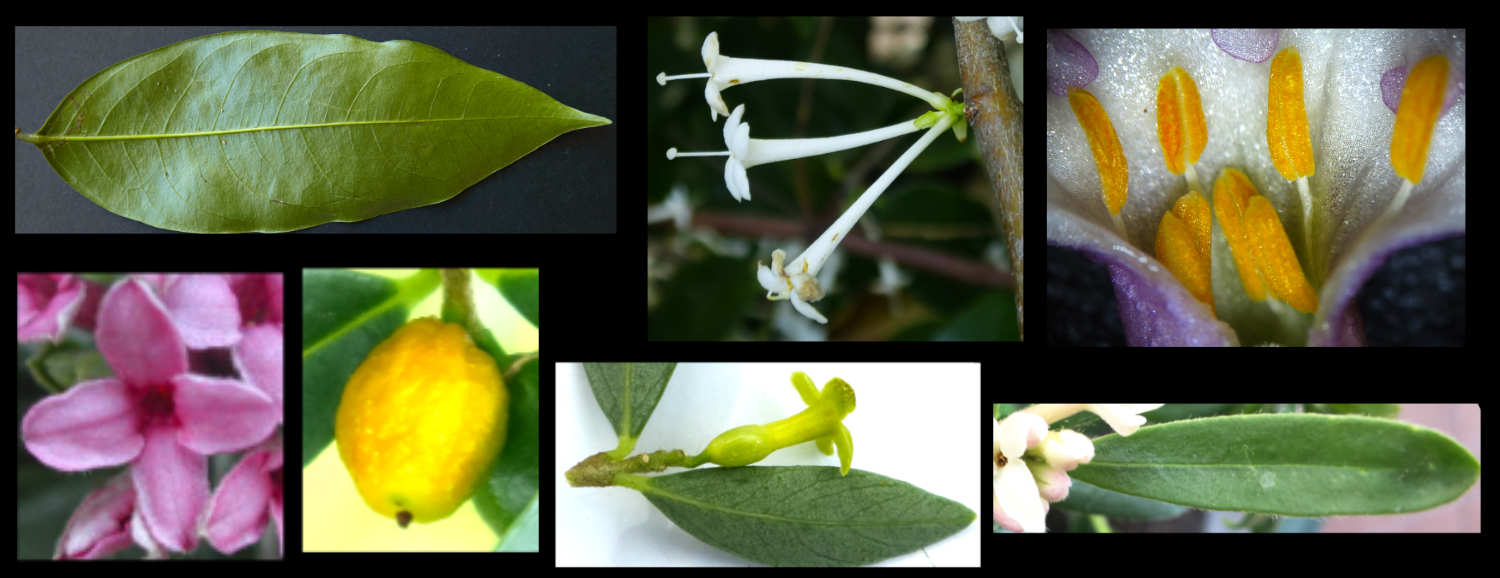Thymelaeaceae.
Plants of the World Online recognises 52 genera in the Daphne Family that come from Africa, America and Asia to Australia.
Mabberley recognises 860 species and Australia has nearly 100 in 8 to 10 genera.
Genera include Daphne, Phaleria (up to 30 species with 3 in Australia), Pimelea (over 100 species with almost all from Australia)
and Wikstroemia with around 70 species.
Over the years the genera have been variously classified and divided into subfamilies.
Descriptions of the flowers themselves vary as parts are difficult to interpret.
For example is can be difficult to distinguish between stamens and staminodes, petals and staminodes and especially the perianth parts.
Most are trees and shrubs with simple opposite, alternate or whorled leaves.
There are no stipules, leaves are directly attached or on a petiole and the veins are pinnate.
Inflorescences can be terminal or axillary and sometimes they are on the bare trunk (caulifery) or branches.
They can be a single flower, a spike, a tight head or a bundle.
There may be involucral bracts at the base of the inflorescence.
Flowers are bisexual, or uni-sexual with male and female being on the same or different plants.
Some have small bracteoles on the flower stalks.
Flowers almost always have a prominent free hypanthium or perianth tube.
The mostly radially symmetric flowers have parts in 4’s or 5’s (8 – 10 or more).
Some flowers have distinct whorls of sepals and petals and some have no petals.
When the perianth is a single whorl it is usually sepal-like with the bases fused into a tubular hypanthium with small lobes on the rim.
Petals may be reduced to small scales in the throat of the hypanthium that are sometimes interpreted as staminodes.
In the bud each whorl of sepals +/- petals overlap like tiles (imbricate).
There may be an annular nectary disc or separate lobes or scales.
Most bisexual and male flowers have 4 stamens in 1 whorl inserted on the rim of the hypanthium or 8 stamens in 2 whorls with
the second whorl inserted in the hypanthium.
Stamens may consist of a filament and anther or just an anther.
Anthers open inwards though longitudinal slits.
Bisexual and female flowers have a superior ovary often with 2 to 5 fused carpels.
It may have 1 or 2 to 5 locules with one pendulous ovule in each.
There is 1 style and stigma.
The fruit include drupes and berries.
J.F.


